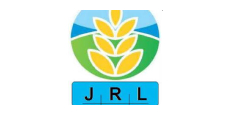Glycerine
Glycerin is a clear, syrupy liquid with a sweet taste and is extremely hygroscopic (water-attracting) in pure form. It is produced by the reaction of oils and fats with water, and is separated and purified to make a high quality product suitable for a wide range of end uses.

Glycerin
BENTONITE
Bentonite is an absorbent phyllosilicate clay consisting monstly of montmorillonite. It was named by wilbur c.knight in 1898. The diffrent type of bentinite are named as named as sodium[Na], Calcium[Ca]. Benotonite usally forms from weathering of volcanic ash, most often in the presence of water, How ever the term Bentonite, aswell as similar clay called tinstein, has been used to describe clay beds of uncertain origin. for Industrial purpose two maint calss of bentonite exists. Sodium and Calcium. Bentonite are two type namely

BENTONITE

CALCIUM BENTONITE
CALCIUM BENTONITE
Agriculture: Bentonite is used as an animal feed supplement, as a pelletizing aid in the production of animal feed pellets, as well as a flowability aid for unconsolidated feed ingredients such as soy meal. It also is used as an ion exchanger for improvement and conditioning of the soil. When thermally treated, it can be used as a porous ceramic carrier for various herbicides and pesticides
BLEACHING EARTH
Fuller's earth consists primarily of hydrous aluminum silicates (clay minerals) of varying composition.[1] Common components are montmorillonite, kaolinite and attapulgite. Small amounts of other minerals may be present in fuller's earth deposits, including calcite, dolomite, and quartz. In some localities fuller's earth refers to calcium bentonite, which is altered volcanic ash composed mostly of montmorillonite.

BLEACHING EARTH

CHINA CLAY
Calcium Carbonate
Calcium Carbonate has historically been one of the preferred fillers for the paper industry. In recent years; it has also become preferred filler for paint industry, heavily substituting kaolin in this application. While the primary reason has been the high quality of kaolin, Customers are also shifting due to the better opacity, gloss and scrub resistance provided by calcium carbonate.
Feldspar
Feldspar is by far the most abundant group of minerals in the earth's crust, forming about 60% of terrestrial rocks. Most European deposits offer potassium feldspar as well as sodium feldspar and mixed feldspars. Feldspars are primarily used in industrial applications for their alumina and alkali content. The term feldspar encompasses a whole range of materials. Most of the products we use on a daily basis are made with feldspar: glass for drinking, glass for protection, glass wool for insulation, the floor tiles and shower basin in our bathroom, the tableware from which we eat, ... Feldspar is part of our daily life.

FELD SPAR

TALCUM POWDER
Talcum Powder or Soap Stone
Talcum powder is made from a mineral called talc, which is composed of magnesium, silicon and oxygen. In its natural form, talc contains asbestos, which is carefully removed from consumer products.
Talc is generally divided into three categories. The first type is cosmetic and food-grade talc, which is used in baby powder and pharmaceuticals, and basketball players use it to keep their hands dry. The second type of talc is a high-talc soapstone that is used for electrical switchboards and lab countertops because it resists heat, electricity and acids. The third type is industrial talc that is used as a lubricant.
Quartz
Quartz (Silica SiO2) is the most common mineral in the Earths crust. Quartz is found in sandstones, pegmatites granites, and other igneous rocks. It forms veins in the cracks of rocks. There is a lot of heat and water where they form. Crystals are made when the quartz cools down. The way the crystal looks depends on how hot it was when it was formed. It can be found in layers or geodes, too. Geodes are hollow rocks that are lined with crystals. It has a hexagonal crystal structure and is made of trigonal crystallized silica. It is most varied in terms of varieties, colors and forms. Of all the minerals, quartz is closest to a pure chemical compound and has constant physical properties.

QUARTZ

BRIQUETTES
BRIQUETTES
Every year millions of tons of agricultural wastes and forest residues are generated.
These wastes can provide a renewable source of energy by converting them into high-density Briquettes without the addition of any binder which could be used as fuel.
Metric Tonnes/Day
Production Capacity
Refineries
Global Usage
Happy
Clients
Years of
Success
Our Partners
We specialise in intelligent & effective Search and believes in the power of partnerships to grow business.











